
Versailles Palace: Tickets and Tours
Versailles Palace is located about 17 kilometers away from Paris and is known for its grandiose palace and gardens — both listed as UNESCO World Heritage Sites. This is the second most visited attraction in France after the Eiffel Tower, which is no surprise to anyone who’s had the chance to wonder at this incomparable collection of castles, fountains, paintings and sculptures. Get your Versailles Palace tickets for the opportunity to explore this opulent marvel yourself.
Read Full Guide
Checking Musement... (0/24 providers)
















































Versailles Palace is located about 17 kilometers away from Paris and is known for its grandiose palace and gardens — both listed as UNESCO World Heritage Sites.
This is the second most visited attraction in France after the Eiffel Tower, which is no surprise to anyone who’s had the chance to wonder at this incomparable collection of castles, fountains, paintings and sculptures. Get your Versailles Palace tickets for the opportunity to explore this opulent marvel yourself.
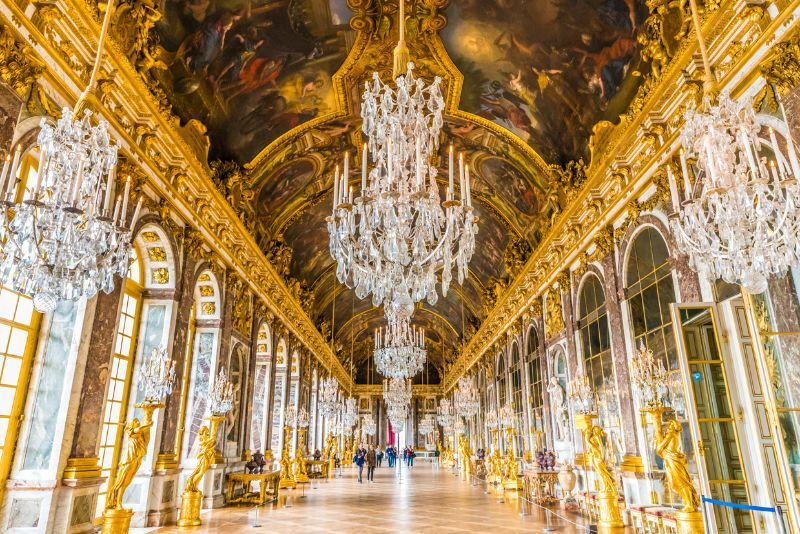
Here’s everything you need to know about Versailles Palace, the most magnificent attraction in Paris.
How much do Versailles Palace tickets cost?
There are three types of tickets: Palace, Passport and Estate of Trianon. Each one gives you access to different areas of Versailles Palace and allows you to add on experiences.
Please note that the prices below are for on-site booking. For online booking, add €1.50 per ticket.
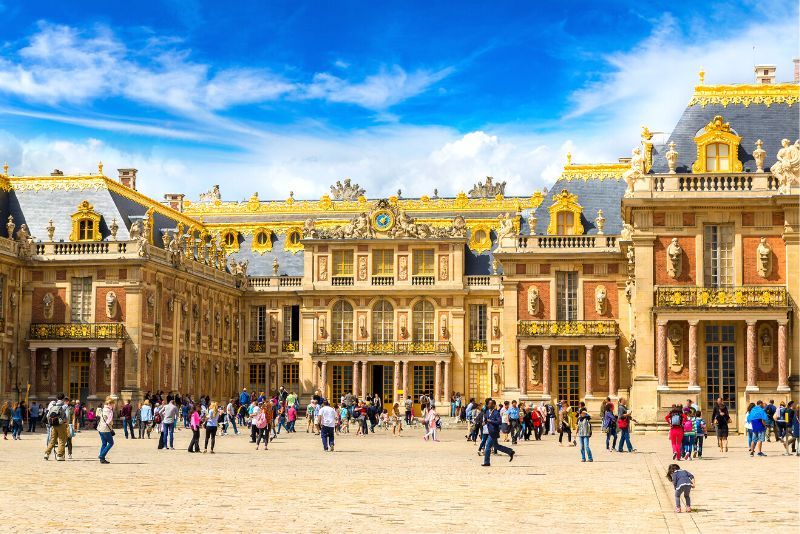
The Palace ticket:
Your key to the interior of Versailles Palace and its temporary exhibitions, the gardens, the park and the gallery of coaches (the Musical Gardens and Musical Fountains Show are not included).
- Palace ticket standard price: €18
- Palace ticket and Self-guided tour of Equestrian Academy price: €20
- Palace ticket and Equestrian Show ticket price: €38
- Palace ticket reduced price: €13 (for large family reduction card holders and friends of national museum society members)
- Free admission for anyone under 18, EU residents under 26 and people with disabilities plus one companion.
The Passport ticket:
This is a more complete version of the Palace ticket and also includes the Estate of Trianon, Musical Gardens and Musical Fountains Show.
- Passport ticket standard price: €20, or €27 on days with Musical Gardens and Musical Fountains Show
- Passport ticket and Return Trip by Little Train price: €33
- Passport ticket and Copy of the Palace Official Guide price: €44
- Passport ticket and Equestrian Show price: €52 (includes Passport ticket access for two consecutive days)
- Passport ticket and Rowboat Ride price: €62
- Passport ticket and Bike Ride price: €62 (for 2 adults)
- Passport ticket and Gourmet Break price: €108 (includes Lunch at Le Petit Venise for 2 adults)
- Passport ticket reduced price: €18 (for large family reduction card holders and friends of national museum society members)
- Free admission or reduced price for anyone under 18, EU residents under 26 and people with disabilities plus one companion (€10 on Musical Fountains Show and Musical Gardens days)
The Estate of Trianon ticket:
This is a budget option and only includes access to the Estate of Trianon (Grand Trianon, Petit Trianon, the Queen’s hamlet and their gardens).
- Estate of Trianon ticket standard price: €12
- Estate of Trianon ticket and Bike Ride price: €32
- Estate of Trianon ticket reduced price: €8 (for large family reduction card holders and friends of national museum society members)
- Free admission for anyone under 18, EU residents under 26 and people with disabilities plus one companion.
The 2-day Passport + Equestrian Show ticket:
This is a great deal. Spend two consecutive days exploring the estate, which includes access to the palace on Saturday at 9:30 AM and a horse show at the Equestrian Academy of Versailles on Saturday at 6 PM.
- 2-Day Passport ticket and Equestrian Show price: €52
Is it possible to visit Versailles for free?
During the first Sunday of each month from November to March, access to the entire Versailles estate, including the Palace and Trianon Estate, is free. However, a reserved time slot is still required for Palace visits.
Moreover, if you’re under 18, an EU resident under 26, a person with disabilities or someone accompanying a disabled person, admission is free for you, except for the days of the Musical Fountains Shows and Musical Gardens, when only children under 6 years old get free admission.
What are the best Versailles Palace tours available?
To most fully enjoy your visit to Versailles Palace, there are loads of options to choose from:
Versailles Palace audioguide tours
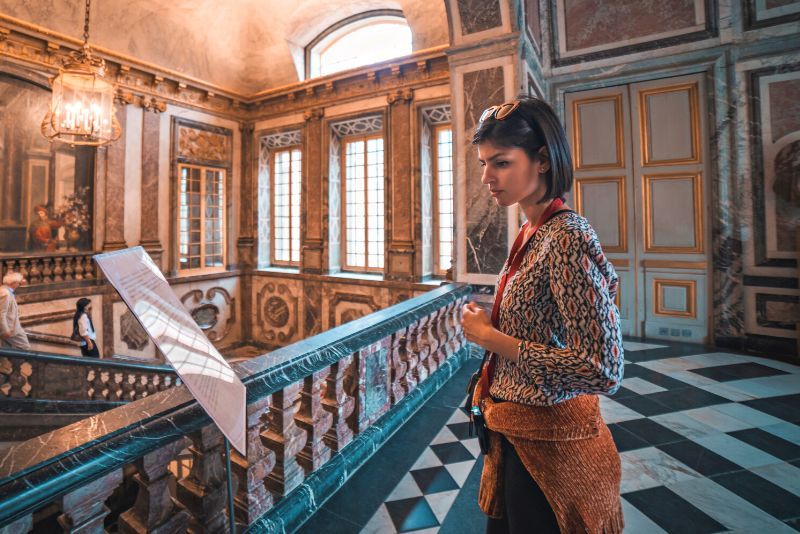
Are you an independent explorer and prefer to hear descriptions of the palace in your native language? Versailles Palace audioguide tours are available in 12 languages: Chinese, English, French, German, Italian, Japanese, Korean, Polish, Portuguese, Russian, Spanish and Ukrainian.
Guided tours of Versailles Palace
Are you worried about getting lost and wasting time exploring the palace grounds? There’s no need to fear with the help of a guide. Guided tours of Versailles Palace will take you along the best routes and maybe even show you rooms rarely seen by the public.
Private Versailles Palace tours
Are you looking to feel like royalty and have a more exclusive visit? Private tours of Versailles Palace allow you to enjoy the grounds individually or in a small group. You will have the guide’s complete attention for any questions or requests.
Versailles Palace and Garden tours
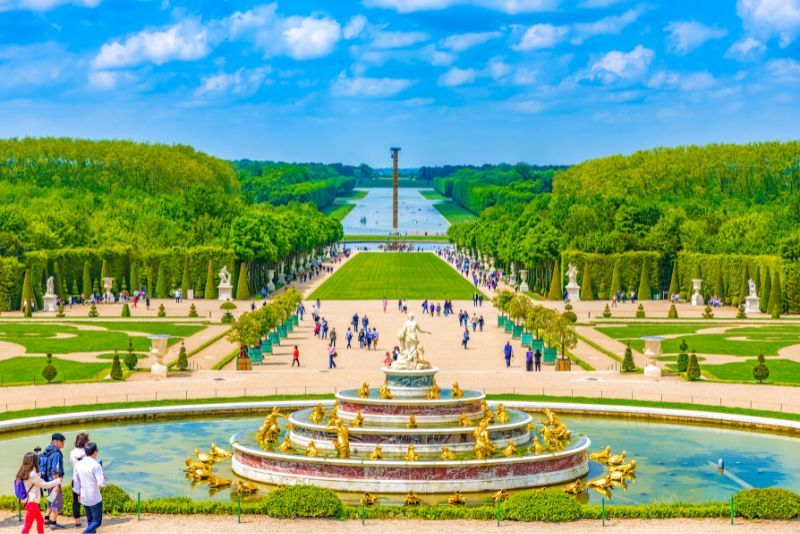
On select days of the year, the sound of orchestral strings provides an idyllic backdrop for your wanderings among the neatly-pruned, geometric bushes on a Versailles Palace and Garden tour.
With or without music, these tours allow you to appreciate the timeless designs of master gardener André Le Nôtre and court painter Charles le Brun. You will see how their design extends the opulence of the palace into the lawns.
Versailles Palace and Fountains Show tours
On select days of the year, you can take a Versailles Fountains Show tour and witness the water dance to classical music in over 15 fountains throughout the estate — a testament to over three centuries of French engineering and garden design.
Morning Versailles tours
Are you a morning bird and looking to beat the crowds? Morning tours allow you to leave Paris with the sunrise and be back in time for lunch. If you have limited time and want to conquer Versailles in half a day, this is the perfect tour for you.
Versailles Palace bike tours

Are you a cycling enthusiast and prefer to pedal around the palace grounds on two wheels? Traditional and electric Versailles Palace bike tours allow you to whiz around Marie-Antoinette's Hamlet and the Petit and Grand Trianons. When you need a break, you can stop for a picnic lunch on the banks of the canal.
Gastronomic tours at Versailles
Are you a foodie hoping to indulge in French cuisine at every chance? Gastronomic tours will take you to farmers’ markets to sample local cheese and wine. In addition, you can dine on the palace grounds at La Petite Venise or at award-winning chef Alain Ducasse’s Ore restaurant.
Versailles tours designed for kids
Are you looking for a fun and educational way for your children to visit Versailles Palace? If so, there are private tours designed for kids from 7 to 17 years old.
Energetic guides will turn the visit into a treasure hunt! Your little detectives will need to get creative and use deductive reasoning to uncover the mysteries hidden throughout the castle by the Sun King and his cohorts.
Helicopter tours over Versailles
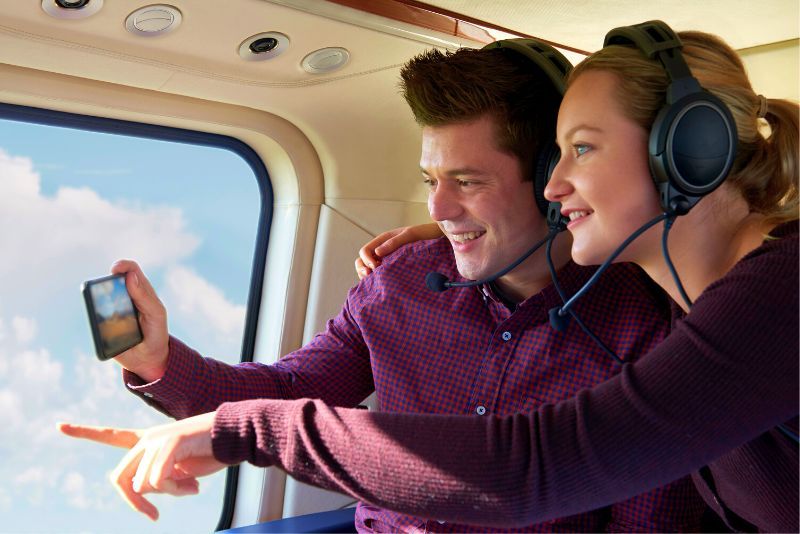
Seeing the City of Love at ground level is nice, but how about a bird’s eye view? On a helicopter tour in Paris, you will soar above all the must-see landmarks on a round-trip to Versailles Palace from Paris.
Choose a morning, afternoon or evening departure. Then, prepare yourself for breathtaking, aerial views of the Eiffel Tower, Montparnasse, La Défense and the Seine River before landing near Versailles Palace for a drink and photo op.
Motorcycle sidecar tours in Versailles
Are you looking to live on the wild side during your visit to the palace? Then, put on your leather jacket and hop on for a Versailles Palace motorcycle sidecar tour.
You will zoom through the Parisian suburbs until reaching the palace gates. After viewing the palace and gardens, you can stop by a local market and then have a picnic lunch along the Grand Canal overlooking Versailles Palace.
Amphibious minibus tours to Versailles
Do you know which avenue is the most beautiful in all of Paris? Many say that it’s the Seine river. On an amphibious minibus tour, you can see for yourself if this is true.
First, you will traverse Saint Cloud Parc by land. Then, you will travel from Sèvres to Paris Pont des Arts by water. See the Eiffel Tower, Grand Palais, the Louvre and Versailles Palace — all without even leaving your seat!
Are there any ticket options that combine entry to Versailles Palace?
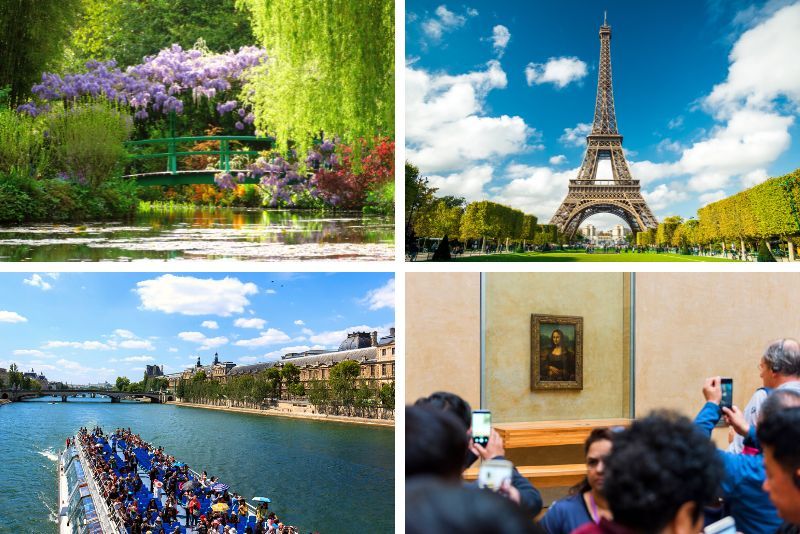
Yes, combined tickets are a great option if you’re looking to visit several attractions on the same day or across several days. Why not buy all your tickets at once to save some time and money?
- Versailles Palace and Giverny: Visit Giverny and see where French painter Claude Monet lived and created his timeless Impressionist pieces.
- Versailles Palace and the Eiffel Tower: Summit the Eiffel Tower and admire the city view from above
- Versailles Palace and the Louvre: Enjoy guaranteed entry within 30 minutes to the Louvre, the most visited museum in the world
- Versailles Palace and Disneyland Paris: Choose a single or double park ticket to Disneyland® Park and/or Walt Disney Studios® Park
- Versailles Palace and Seine river cruise: See for yourself on a Seine river boat tour why many consider it to be the most beautiful avenue in all of Paris
What will you see at Versailles Palace?
After entering the Versailles Palace gates, you will witness the most opulent expressions in the history of the French monarchy. This is indisputably one of the most grandeur palaces in the world.
Take a step into the past and feel the magnificence once felt by the French monarchy during the coming and goings of their daily lives, often punctuated by decadent feasts and galas.
The Palace
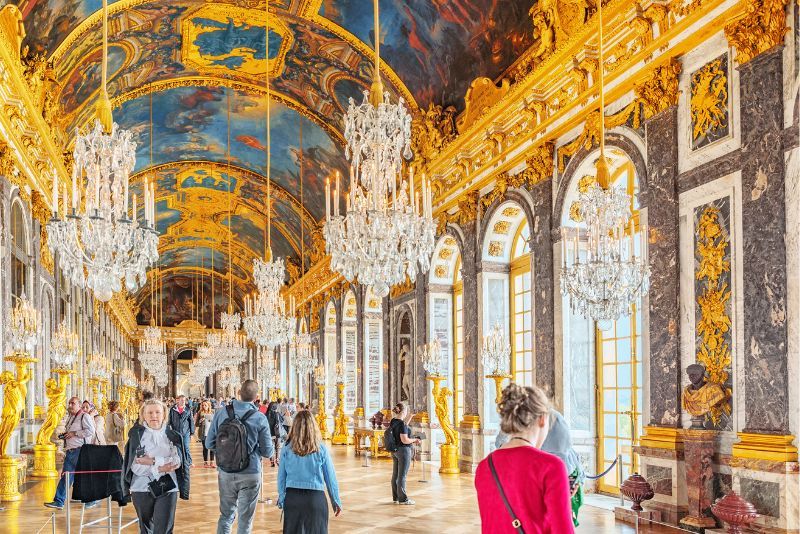
As you stroll inside the ornate walls of Versailles Palace, you will have countless splendid sights to behold.
The Hall of Mirrors is the palace’s central gallery. As you walk from the War Room to the Peace Room, you will gaze upon 357 mirrors adorning 17 arches — each reflecting the view of the gardens from the arcaded windows on the other side.
When you look up, you will see the vaulted ceiling decorated with 30 compositions by the First Painter to the King — Charles Le Brun. Each one illustrates the glorious success of Louis XIV’s reign.
Although courtiers and visitors would traverse this hall on daily, mundane affairs, it would also be used for lavish ceremonies to mark historic events — even in more modern times. This is where the Treaty of Versailles was signed to end the First World War.
In the War Room, you will be surrounded by marble panels and gilded bronze statues of gods and goddesses. Pheme and Clio represent Louis XIV’s fame and historical importance, while Bellona, the goddess of war, rages against Rebellion and Contention.
In the center of the cupola ceiling, you can wonder at a personified depiction of France — sitting on a cloud surrounded by Victories with Louis XIV on her shield. Her defeated enemies below in the form of an eagle and a pair of lions.
In the Peace Room, you will find the same symmetrical shape and a similar style of marble and gilded bronze as the War Room. However, the theme of the paintings and statues is different — highlighting the benefits that France brought Europe through its peace agreements.
This is where Marie-Antoinette would host concerts of religious or secular music every Sunday. The partition separating the room from the Hall of Mirrors would be removed to accommodate the elegantly-dressed guests.
The King’s State Apartment is composed of seven lavish rooms. Each is named after a Greek deity (Hercules, Venus, Diana, Mars, Mercury and Apollo) except for one — the Room of Abundance.
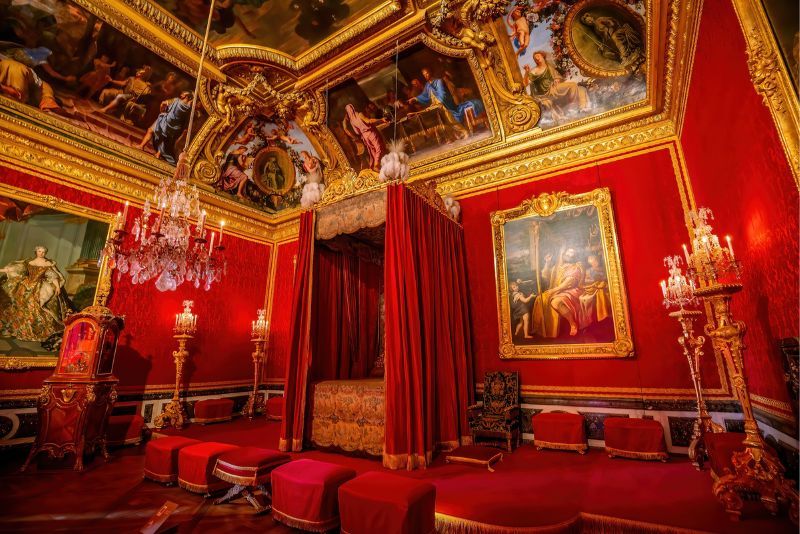
Guests would be paraded through these chambers to see the king and royal family on their way to the royal chapel. This was also the space where the sovereign’s official acts would be decreed.
In the evenings, extravagant gatherings were often held. Attendees would be impressed not only by the baskets of rare fruit and flowers but also by the paintings and sculptures adorning each corner and every wall — even the ceilings!
Some of the highlights include François Lemoyne’s ceiling painting The Apotheosis of Hercules, Hyacinthe Rigaud’s famous portrait of Louis XIV and Carle Van Loo’s State portraits of Louis XV and Marie Leszczyńska.
The King’s Apartment is composed of the King’s Guard Room, the Antechamber of the Great Dining Room, the Council Room, the Bull’s Eye Antechamber and the King’s Chamber. Those last two rooms are temporarily closed to the public due to restoration works.
Here you will find a relatively understated style compared to the State Apartments. You will see how the decór reflects the change in the king’s tastes. Now you have white ceilings and gold woodwork instead of rich marble panels and extravagantly painted ceilings.
The King’s chamber is the most important and symbolic room in the apartment. This is where dozens of courtiers would assist in the king’s “getting up” and “going to bed” ceremonies. This is also where Louis XIV passed away on 1 September 1715 after a 72-year reign.
Louis XIV personally chose the paintings that you see hanging in this chamber, which include Boulogne’s The Tribute to Caesar, Lanfranco’s Hagar in the Wilderness, Caracciolo’s Saint John the Baptist and Zampieri’s Mary Madeleine, among others.
The Gallery of Great Battles is the largest room in the palace, covering nearly the entire first floor of the South Wing, and features over 30 gigantic paintings depicting 15 centuries of French military successes.
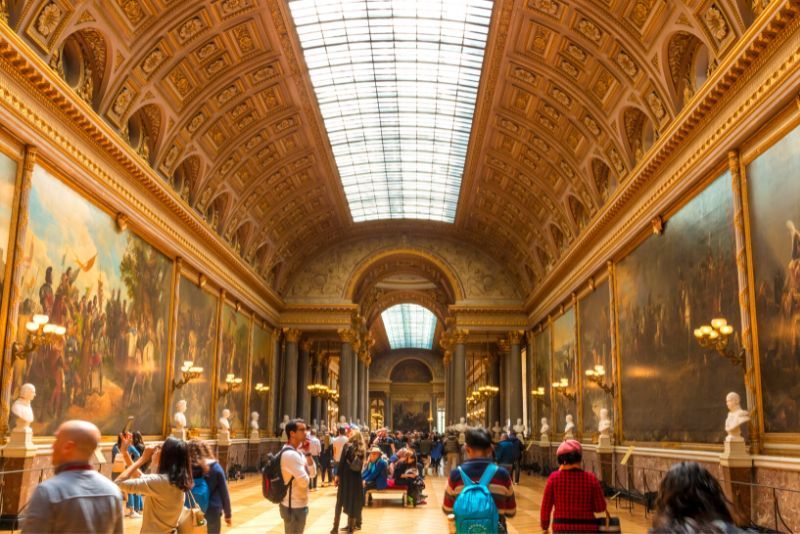
The four largest paintings in the collection are Gérard’s Austerlitz and The Entry of Henry IV into Paris and Horace Vernet’s The Battle of Bouvines and The Battle of Fontenoy.
In addition, there are works by some of the most well-known historical painters of the 19th century, including Delacroix, Schopin and Steuben, among many others.
Besides paintings, you will also find over 80 busts and tables in bronze of officers, princes and admirals killed or wounded in the name of France.
The Royal Opera of Versailles is the palace’s main theater. It was the largest concert hall in all of Europe when it was opened in 1770. Designed to serve as a ballroom, theater and hall for feasts, it features a complex system of movable floors to fit each occasion.
Before the French revolution, this theater was only used about 40 times for various balls and galas, including the royal wedding of Louis XVI and Marie-Antoinette on 16 May 1770.
First Architect to the King, Jacques-Ange Gabriel, incorporated elements that were innovative at the time, including an oval layout, staggered levels, and French-style boxes (without partitions).
Although the theater has gone through several periods of disrepair and renovation through the centuries, it is now fully functional and has been hosting concerts and performances since 2009.
The Royal Chapel was Louis XIV’s last major building project. The King’s Architect, Jules Hardouin-Mansart, sought to follow the tradition of French royal architecture while adding a modern, grand royal style consistent with the rest of the palace.
When you look up, you will see a vaulted ceiling with no transverse ribs. This gives an uninterrupted surface to display Coypel’s God the Father in his Glory, de La Fosse’s The Resurrection in the apse and Jouvenet’s The Descent above the Royal Tribune.
The chapel features an organ designed by Clicquot and decorated with a beautiful depiction of King David in relief. In the past, the music of motets would ring out on a daily basis. More recently, the chapel has hosted concerts of the works of Bach, Brahms and many others.
The Gardens
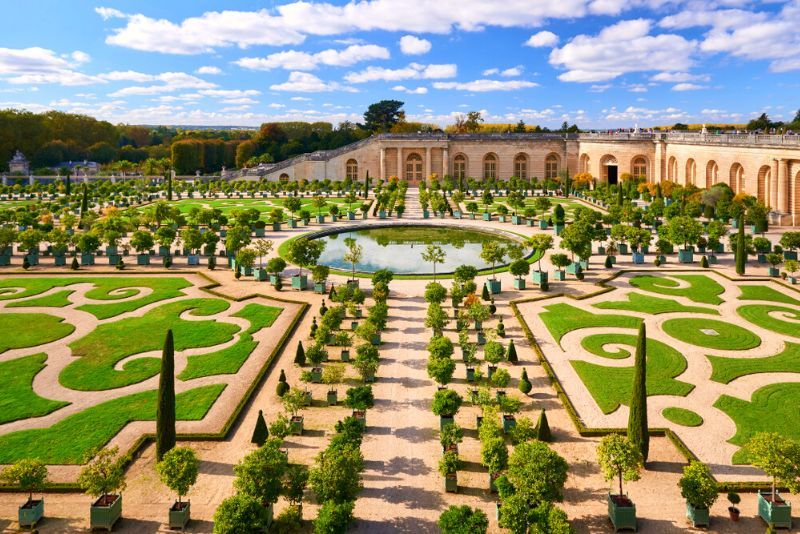
Master gardener André Le Nôtre and court painter Charles le Brun designed these gardens not as a repose from the opulence of the palace interior but as an extension of its extravagance and grandeur.
In the over 830 hectares of gardens surrounding the palace, you will find an assortment of immaculately-arranged trees and bushes. Among these are dozens of ornate fountains and hundreds of statues that are equally as elaborate and impressive as the interior of the palace.
As you step out onto the lawn of Versailles Palace, you will see:
Fountains and Water Features
These marvels of architecture and engineering required no electricity when first built. Hydraulic wheels redirected millions of liters from the Seine River, and innovative pipe designs supplied the pressure to pump water through dozens of intricately-designed fountains.
- The Four Seasons Fountains stand at the crossroads of The Royal Way. Each is named after a season of the year and is represented by a Greek deity — Spring and Flora, Summer and Ceres, Autumn and Bacchus, and Winter and Saturn.
- The Fountains of the Fight of the Animals are west of the Water Parterre on either side of the central axis. The Evening Fountain features lions bringing down a wolf and wild boar. The Daybreak Fountain features a tiger and bloodhound hunting a bear and stag.
- The Dragon Fountain is at the end of the Water Walk and is the tallest of all the fountains — its water jets reach over 27 meters high! The fountain portrays young Apollo killing the serpent Python with an arrow shot.
- The Neptune Fountain has the biggest and the most variety of water jets. The fountain requires a complex hydraulic system to stream water from its 99 jets.
- Latona’s Fountain recounts the myth of the peasants of Lycia who hurled insults at young Apollo and Diana. Their mother, Latona, pleaded with Jupiter for vengeance. He complied by turning the peasants into lizards and frogs, which you can see delicately placed in and around the fountain.
- The Grand Canal is the largest pool in the gardens. This cross-shaped canal is over 1,670 meters long. Under Louis XIV’s reign, this was the site of elaborate fireworks displays that would light up the eyes of guests during royal galas.
Groves
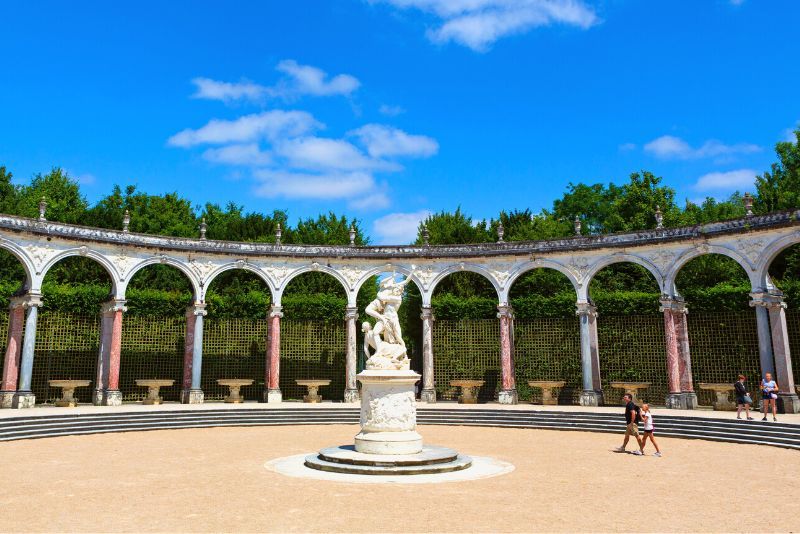
These mini-parks ensconced among the trees and off the main pathways are where the kings would often go for walks to connect with the beauty of nature and escape the weight of the crown, at least for a moment.
There are over a dozen different groves to discover. Many of them feature fountains and waterfalls, along with an assortment of vases and statues.
- The Queen’s Grove was designed to highlight the Virginia tulip tree, which is planted in its center and was first introduced to the country at the end of the 18th century. It is only open during the days of the Fountain Shows and Musical Gardens.
- The Ballroom Grove is an amphitheater of greenery and contains the only waterfall on all the palace grounds. The cascade has eight levels and is decorated with marble ramps, millstones and shells.
- The Star Grove takes its name from its complex shape. It features circular, meandering paths, which lead to an open lawn at the heart of the grove.
- The Water Theater Grove was the place for elaborate fountain shows forming seemingly impossible figures, much to the delight of onlookers. In 2015, landscape architect Louis Benech and artist Jean-Michel Othoniel introduced a more modernist fountain and garden design to the grove.
The Orangery
A masterpiece of architect Jules Hardouin-Mansart, you will likely be taken aback by the sheer scale, height and pure lines of the building. The central gallery is over 150 meters long and has a 13-meter-high vaulted ceiling.
The Orangery’s parterre is over three hectares and was originally stocked with orange trees gathered from all the royal houses, plus more shipped in from Portugal, Spain and Italy. Today, there are also over 1,000 oleander, pomegranate and palm trees planted in movable containers that are brought indoors every winter.
The Estate of Trianon
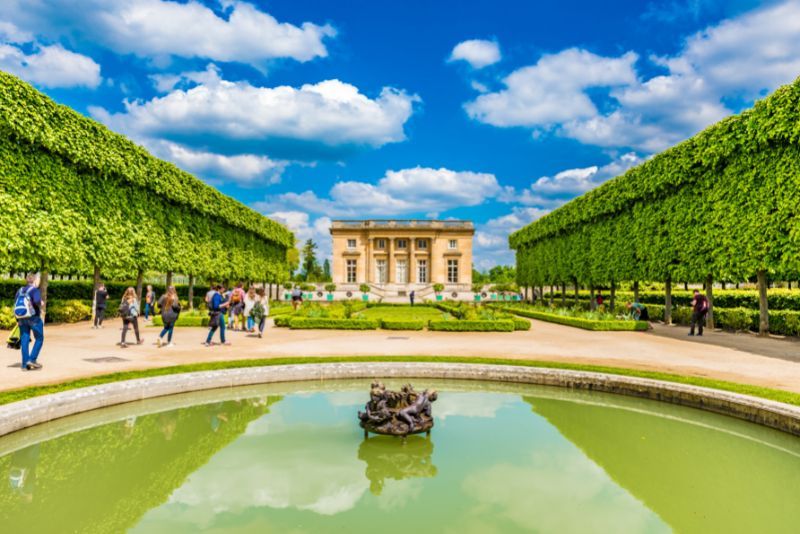
- The Grand Trianon is a “little palace of pink marble and porphyry,” as the architect Hardouin-Mansart once described it. The fragrance of tens of thousands of aromatic herbs and flowers will welcome you on your approach to the building.
- The Petit Trianon has a simple cube shape. However, each façade has its own look, adding harmony and elegance to the design. Louis XVI gave it as a gift to his wife Marie-Antoinette, whose apartment overlooks the English Gardens and the Love Monument.
- The English Gardens was originally a botanical garden, but Marie-Antoinette transformed it into an Anglo-Oriental garden with fewer buildings and more natural features like the Grotto.
- The Love Monument is an intimate expression of Marie-Antoinette’s sensibilities and was realized with the help of architect Richard Mique. In its center is a sculpture symbolizing love — a replica of Bouchardon’s Cupid Cutting His Bow from the Club of Hercules.
- The Queen’s Hamlet is actually a grouping of 10 relatively small buildings — each with its own garden of vegetables, herbs and flowers. Its design is in step with Rousseau’s spiritual guidance of getting back to nature and, at times, looks better suited for hobbits than royalty.
How do you get to Versailles Palace?
Versailles is a suburb of Paris located about 17 kilometers southwest of the center of the city.
By train
To get to Versailles from Paris by train, you can take the RER C train from Austerlitz station to Versailles. The journey lasts about 45 minutes, and a round-trip ticket is €7.
By car
To get to Versailles from Paris by car, you can take the A13 or the A86 highways. However, please note that there are daily traffic jams in Paris and its suburbs. Depending on the traffic, the trip can take anywhere from 45 minutes to over an hour. You can also take the N118 as an alternative.
By guided tour
Versailles Palace tours from Paris are convenient for traveling out from the center of the city. You can choose to have a round-trip tour solely focused on Versailles Palace or one that will also stop at other points of interest. This way, you can sit back, relax and enjoy the views.
What are the Versailles Palace opening times?
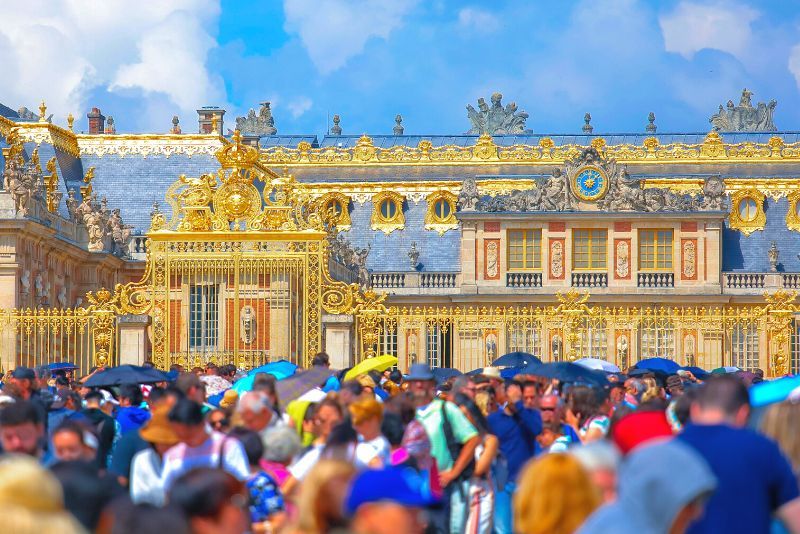
Versailles Palace is open year-round from Tuesday to Sunday (except January 1st, May 1st and December 25th) between 9 AM and 6:30 PM. The last admission is at 6:00 PM, and the ticket office closes at 5:50 PM.
The Park is open every day from 7:00 AM to 8.30 PM, but it can be closed due to bad weather (in the case of snow, violent wind and heavy rain).
The Gardens are open every day between 8 AM and 8:30 PM, but also can be closed during poor weather conditions. The last admission is at 7:00 PM. Please note that the Gardens close at 5:30 PM on Saturdays that feature the Fountains Night Show.
When is the best time to visit Versailles Palace?
The best time to visit Versailles Palace is in late spring or early fall to beat the heat and avoid the summer crowds in the high season.
If you can’t avoid the high season, be sure to get there early! The 9 AM to 10 AM time slot tends to have much fewer people — even on the busiest days. You can check the Versailles Palace official website for live updates on attendance rates and choose the best time to visit.
Booking your tickets in advance online is another way to avoid the long lines at the ticket counters by the main entrance of the palace.
Avoid visiting during the winter months if you want to see the parks and gardens at their best. During this time, the statues are covered, and fountains are turned off, so there will be much less to see.
Tips before you go
- Protect yourself from the heat – In the summer, Versailles Palace and Gardens tend to be very warm and sunny. Don’t forget the sunscreen! Also, bring a hat, summer clothes and sunglasses.
- Get there early – About 27,000 people visit Versailles Palace every day. You can’t completely avoid the tour buses and queues, but you can try to arrive before them, right as the palace opens.
- Do not bring luggage or large bags, which are prohibited to ensure the security of the palace. Also, you might need to have your bag checked at the entrance, as part of the "Vigipirate" security plan. For more information, visit the Versailles Palace official site.

